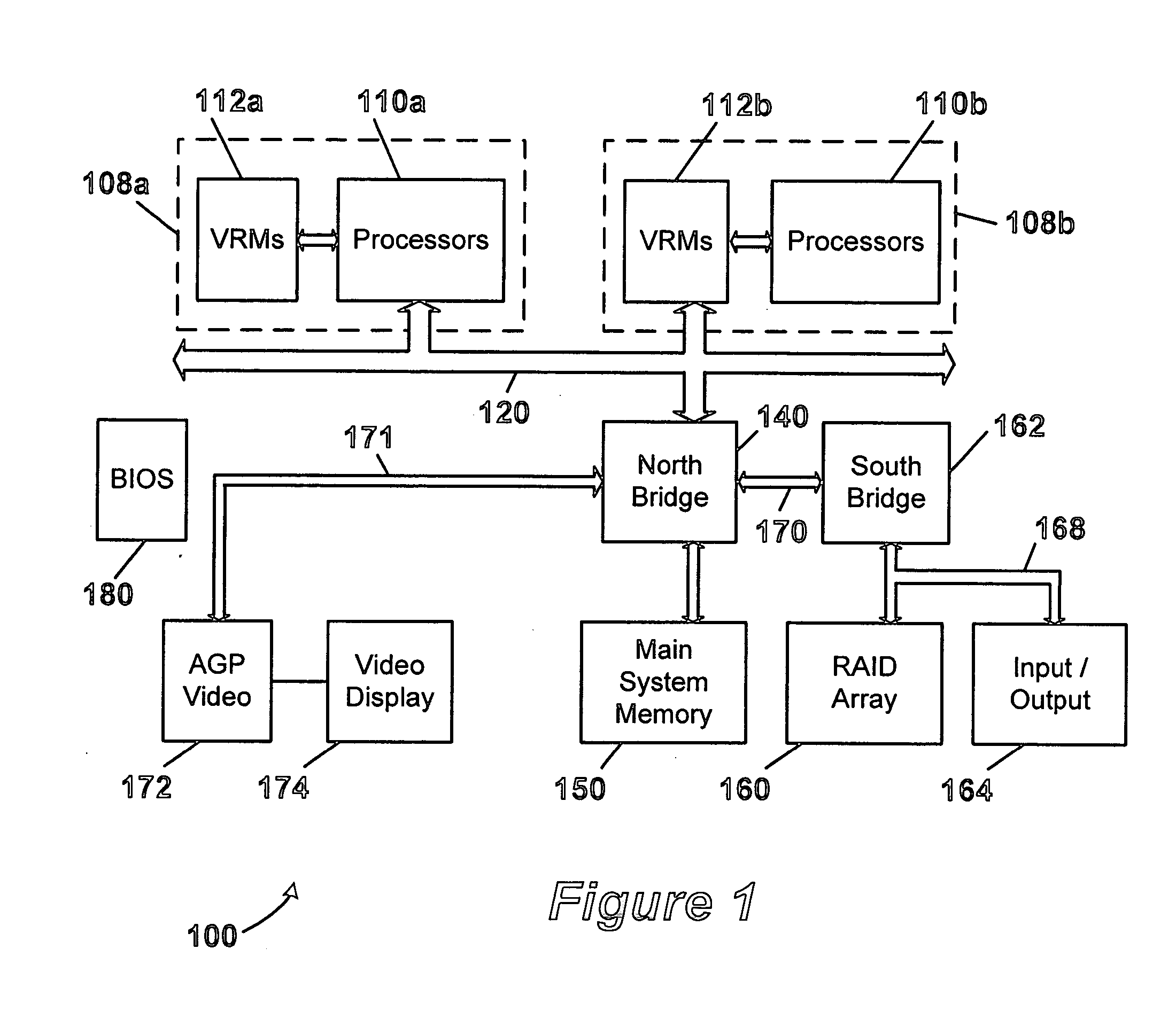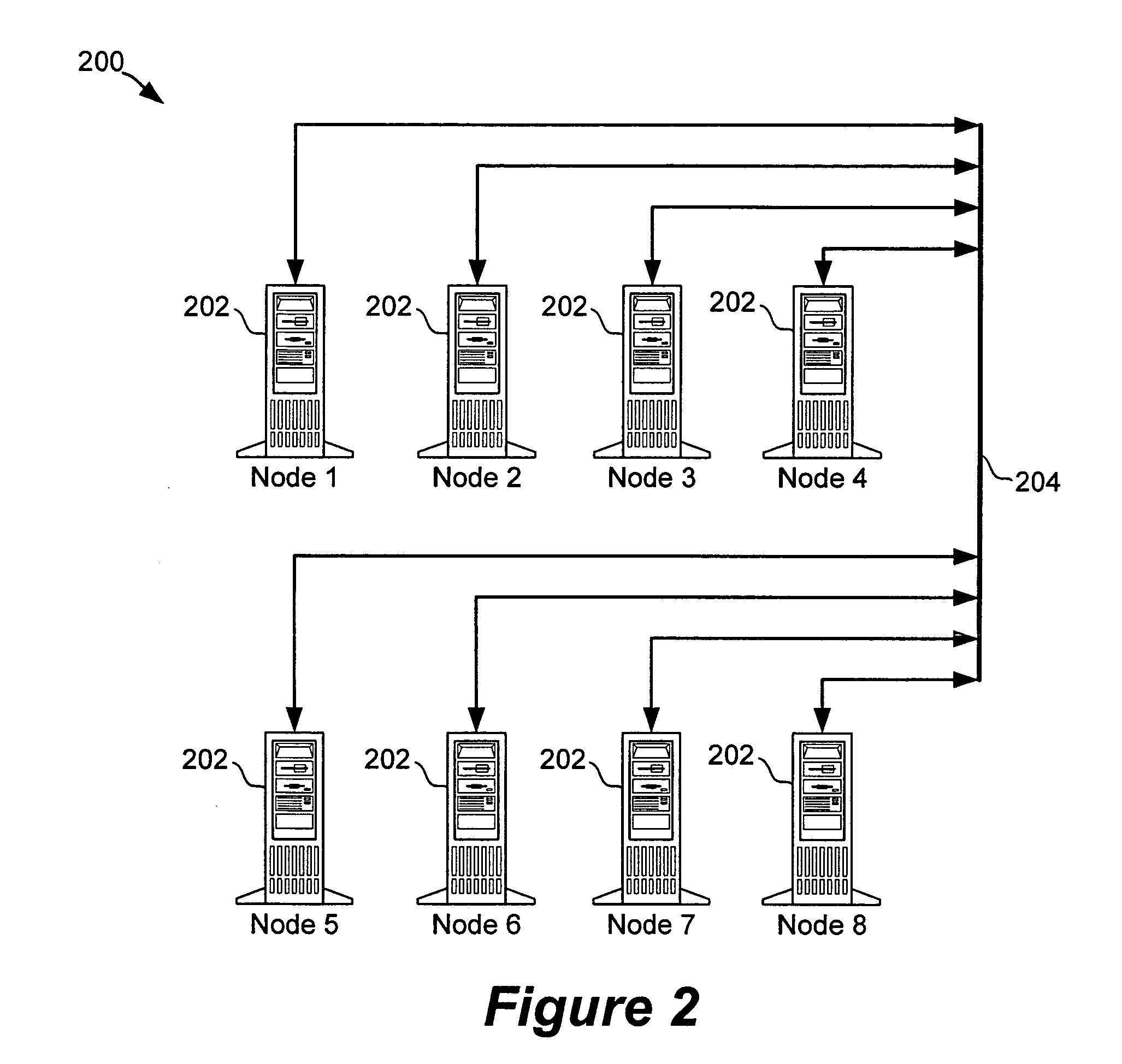Plug and play cluster deployment
a cluster deployment and plug-and-play technology, applied in the field of computer systems, can solve the problems of time-consuming and labor-intensive deployment of large clusters of computers or servers, 100 hour installation time, and large time-consuming installation of new softwar
- Summary
- Abstract
- Description
- Claims
- Application Information
AI Technical Summary
Benefits of technology
Problems solved by technology
Method used
Image
Examples
Embodiment Construction
[0025] Elements of the present disclosure can be implemented on a computer system, as illustrated in FIG. 1. Referring to FIG. 1, depicted is an information handling system, generally referenced by the numeral 100, having electronic components mounted on at least one printed circuit board (“PCB”) (not shown) and communicating data and control signals there between over signal buses. In one embodiment, the information handling system may be a computer system. The information handling system may be composed processors 110 and associated voltage regulator modules (“VRMs”) 112 configured as processor nodes 108. There may be one or more processor nodes 108, one or more processors 110, and one or more VRMs 112, illustrated in FIG. 1 as nodes 108a and 108b, processors 110a and 110b and VRMs 112a and 112b, respectively. A north bridge 140, which may also be referred to as a “memory controller hub” or a “memory controller,” may be coupled to a main system memory 150. The north bridge 140 may...
PUM
 Login to View More
Login to View More Abstract
Description
Claims
Application Information
 Login to View More
Login to View More - R&D
- Intellectual Property
- Life Sciences
- Materials
- Tech Scout
- Unparalleled Data Quality
- Higher Quality Content
- 60% Fewer Hallucinations
Browse by: Latest US Patents, China's latest patents, Technical Efficacy Thesaurus, Application Domain, Technology Topic, Popular Technical Reports.
© 2025 PatSnap. All rights reserved.Legal|Privacy policy|Modern Slavery Act Transparency Statement|Sitemap|About US| Contact US: help@patsnap.com



